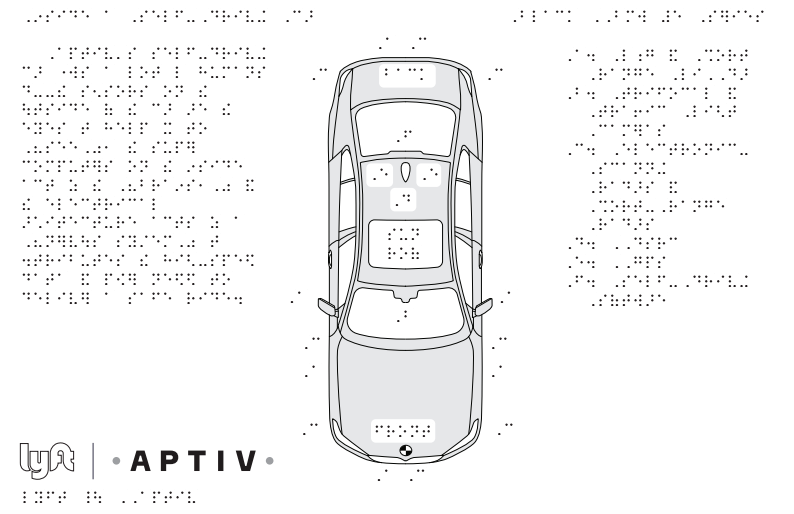Lyft and Aptiv are already running autonomous driving trials in Las Vegas, and now they’re expanding that limited pilot to include low vision and blind riders in a new partnership with the National Federation of the Blind. In a blog post dealing the news, Lyft notes that this is a key par of their overall strategy of provision mobility for all, via their other offerings including shared rides, electric bikes and scooters and more.
The company has already been working with the National Federation of the Blind to ensure that its core ride-hailing product is accessible to riders who might be blind or have low vision, and this extension of that work now means its pilot fully autonomous ride-hailing network is available as an option to this group of passengers with more accessible features, including Braille guides for riders of the self-driving vehicles, which provide detailed info about the route the autonomous test cars run in Las Vegas, and information about the Aptiv self-driving vehicles themselves. These detail sensors and technology positioned across the car, so riders can be fully informed as they participate.

One of autonomous driving’s biggest potential benefits is providing access to driving to people who wouldn’t otherwise be able to use that mode of transportation, including people with low vision, people with epilepsy, or older drivers who’ve lost the ability to legally maintain a license and operate a vehicle, among many others.
Aside from the still-immense challenge of getting the autonomous driving technology to a place where it’s ready for broad deployment and consumer use, there are challenges around how the user interface will work for both hailing and accessing the vehicles, and ensuring that people making use of the service are properly informed about what’s going on. Lyft’s plan to work on all these aspects of their service with advocacy and empowerment groups who take this as their central mission seems like a smart one.

